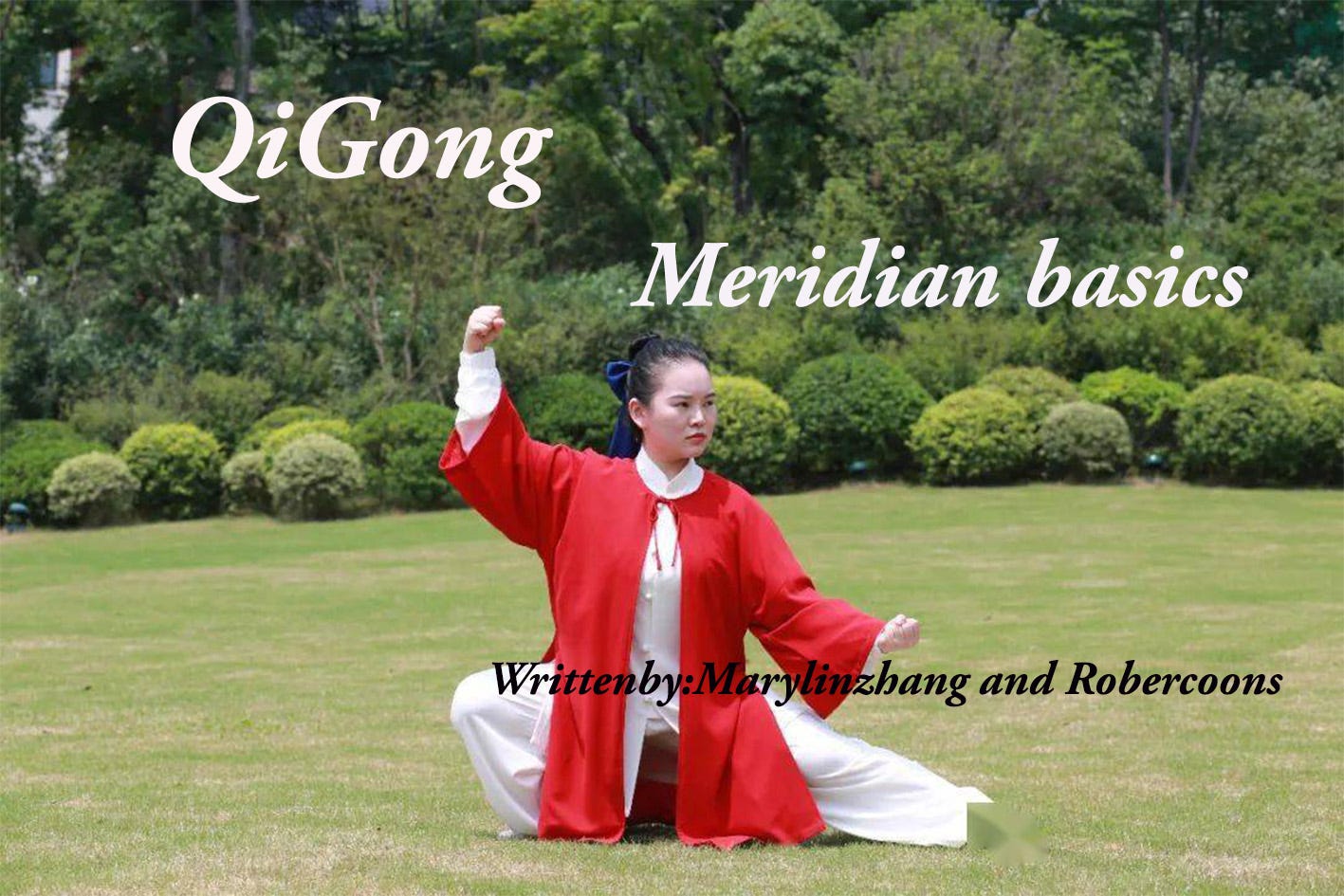QiGong Meridian Basics
What is a Meridian in TCM?
Traditional Chinese Medicine uses the Meridian and Collateral system to explain the movement of Qi around the body.
Qi is a difficult to explain subject which I'll write about in a future article, but today I would like to explain what meridians are and how they work.
The idea of meridians in Chinese Medicine began before the Common Era during the Chinese Warring States Period.
At that time ancient doctors such as Bian Que discovered the inner anatomy of the body through experimental surgery.
Not only did they come to understand the structure and action of the internal organs and viscera, they also established the theory of “Vessels,” which later formed meridian theory.
The most ancient document discussing the vessels is called the 阴阳十一脉灸经 Yin and Yang Eleven Vessels Moxibustion Classic.
It was discovered at the Mawangdui funeral complex in Changsha Hunan during an archaeological dig in the mid twentieth century.
This text describes eleven blood vessels running from the heart to the limbs and head of the body.
There are a number of other similar documents and wooden medical models from the same period that show an eleven and later twelve vessel model.
Some of them have acupoints and some do not, but it is commonly theorized that the idea of acupoints came after the meridians and were used as a way to explain different points along the channels where Qi collects in greater abundance.
By the common era Chinese Medicine doctors began to exclusively explain the meridians as numbering twelve and established the idea that rather than being discrete blood vessels they were actually conduits for the Qi of the body.
Around the same time the idea of deep meridians called the Eight Extraordinary Channels began to be established.
Today I will explain in brief the function of the Meridians so that in future articles they can be described in more detail.
1: The Twelve Meridians:
The twelve meridians include:
Lung Meridian,
Large Intestine Meridian,
Pericardium Meridian,
San Jiao Meridian,
Heart Meridian,
Small Intestine Meridian,
Spleen Meridian,
Stomach Meridian,
Liver Meridian,
Kidney Meridian,
Gallbladder Meridian,
Bladder Meridian,
I will explain the precise locations of these meridians and their functions in a later article, but for now I would like to explain the nature of the meridians to help you understand how Chinese Medicine and Qigong use the Meridians to help cure illness and make the body stronger.
Basic structure of the Meridians:
The human body has three Yang and three Yin surfaces called the Six Meridians which include:
Tai Yang: outermost outside surface including the little toe, outer leg, and body, and can generally be considered as the back surface of the body, this path also runs from the outer edge of the pinkie nail along the outermost section of the arm, to the head next to the ear.
Shao Yang: another plane which runs along the middle section of the outer leg and outer arm and is associated with the body flank. It ends in the fourth toe and beginning on the outer tip of the ring finger cuticle,
Yang Ming: The innermost outer surface of the leg which ends in the outer edge of the middle toe cuticle and begins in the inner edge of the index finger. This meridian path falls within the anterior torso in its outer aspect,
Tai Yin: this innermost channel runs from the outer aspect of the big toe cuticle and ends in the inner edge of the thumb cuticle. This meridian runs along the anterior torso on its inner aspect,
Shao Yin: this channel runs from the bubbling well point in the arch of the foot to the inner corner of the pinkie finger cuticle and represents the center Yin surface of the inner leg and arm.
This path runs on the anterior body surface outside of the Tai Yin.
Jue Yin: the end of the Yin channels, it runs on the outermost surface of the inner leg and arm from the innermost big toe cuticle to the tip of the middle finger. This path effectively runs along the anterior torso in a line with the nipples or just outside of them depending on position of specific acupoints..
If you were to hold your arms straight above your head the six meridians would fall directly along the lines I just mentioned.
They would establish two sets of three parts running from outer and inner and inner to outer along the outer and inner surfaces of the arms legs and body.
Before even thinking about what organs the Meridians are associated with we should first understand that the Six Meridians describe measurable surfaces of the body which describe six individual depths of surface relative to the interior and exterior aspects of the body.
This is why TCM Skeptics typically do not understand the actual theory of the Meridians since they do are not blood vessels, arteries, veins, or specific channels of the nervous system, but instead actually describe planes of the body which fall upon specific paths and are basically the same in all people.
Considering these planes we should recognize that they are made up of many different blood vessels, arteries, veins, nerves, muscles, sinews and so on and that these systems give rise to the function of our bodies!!
Therefore a meridian is not a conduit for blood, but a system of elements which comprise a plane of the body.
Some people might accuse me of misunderstanding the tracks of the Twelve Meridians, but I will qualify my statement by saying that they run at different depths relative to what part of the body is in question.
A brief summary of depths of the Twelve Meridians goes like this:
Keep reading with a 7-day free trial
Subscribe to Marylin Zhang Chinese Medicine Nutrition and WellBeing to keep reading this post and get 7 days of free access to the full post archives.



